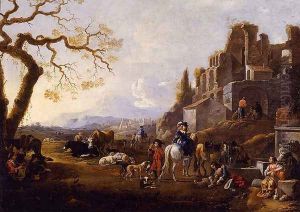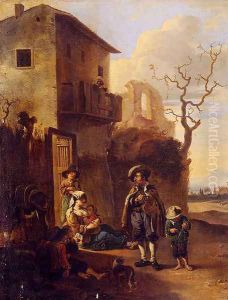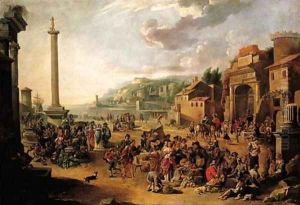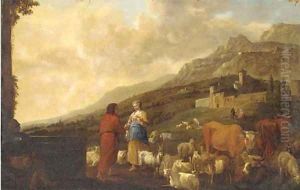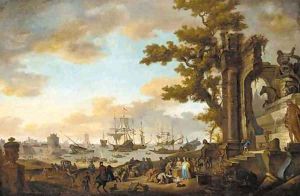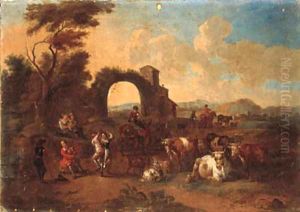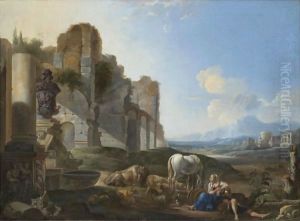Anthonie Goubau Paintings
Anthonie Goubau was a Flemish painter born in 1616 in Antwerp, a city renowned for its vibrant artistic community during the 17th century. His early life and education in art are somewhat obscured by the lack of comprehensive records, but it is evident that he emerged from the rich tradition of Flemish painting, which was characterized by its attention to detail, vibrant colors, and intricate compositions. Goubau is particularly noted for his contributions to the genre of genre scenes and landscapes, often imbued with a sense of the theatrical and an eye for the minutiae of daily life.
Goubau's works are distinguished by their meticulous attention to the textures and details of both natural and human-made environments, demonstrating a keen observation of his subjects that was typical of Flemish artists of the time. He was heavily influenced by the Italianate landscape, a result of his travels in Italy, particularly in Rome, where he spent a significant period from 1639 to 1641. This experience deeply impacted his artistic style, as seen in his integration of Italian landscape elements with Flemish techniques, creating a unique fusion that set his work apart from his contemporaries.
Upon returning to Antwerp, Goubau became a master in the Guild of Saint Luke in 1649, an acknowledgment of his skills and contribution to the art community in Antwerp. His paintings from this period onwards show a remarkable blend of the pastoral with the dramatic, often populated with figures from daily life set against the backdrop of expansive landscapes that hint at the sublime. Despite the apparent influence of Italian landscapes, Goubau's work retains a distinctly Flemish quality, particularly in his treatment of light and shadow, as well as in the narrative quality of his scenes, which often seem to tell a story or capture a moment in time.
Throughout his career, Goubau enjoyed considerable success and recognition, contributing to the cultural and artistic life of Antwerp. His works were sought after by collectors and patrons, not only in Flanders but across Europe, attesting to the wide appeal of his artistic vision. Goubau passed away in 1698, leaving behind a legacy that captures the rich interplay between the Flemish tradition and Italian influences, marked by his exceptional ability to convey the texture of the world through his detailed and dynamic compositions. His paintings remain celebrated for their vivid portrayal of 17th-century life, blending the everyday with the artistic to create enduring images of the world he inhabited.
